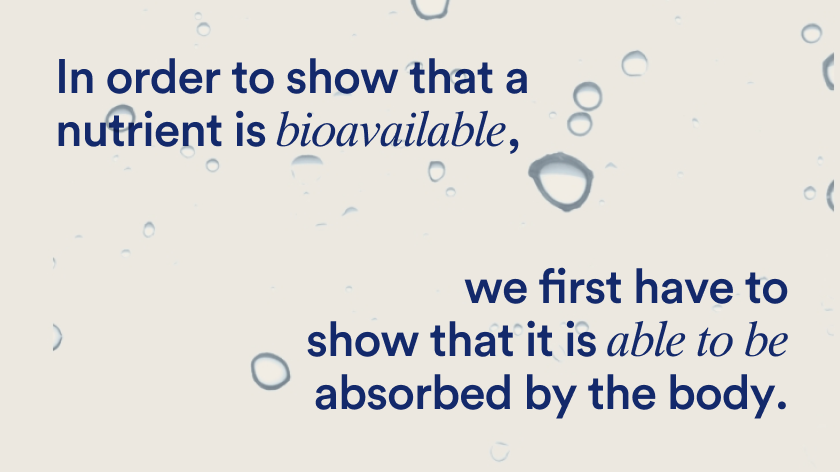Essential Takeaways
-
The point of supplementation is to support the body’s nutrient needs—and that means accounting for the bioavailability of the ingredients becomes really (really) important when picking a formula.*
-
We tapped Ritual's Senior Scientist, Arianne Vance, MPH, for an easy-to-understand crash course on what, exactly, bioavailability refers to—and why you should care.*
The whole point of vitamin supplementation is to support the body’s nutrient needs—which means accounting for the bioavailability of the ingredients is really, really important. Scratching your head? We tapped Ritual’s Principal Scientist, Arianne Vance, MPH, for an easy-to-understand crash course on what, exactly, bioavailability means—and why you should care. Class has commenced!
What Is Bioavailability?
“In simple terms, bioavailability can be defined as the amount of an ingested dietary ingredient that is absorbed in the gut and made available for use or storage by the body,” explains Arianne. In other words, it’s a measure used to define the percentage of a nutrient (or ingredient) that actually gets absorbed into the body’s tissues. (1,2,3)
When it comes to food, Arianne notes that different forms of a nutrient can have different bioavailabilities. Take iron, for instance—there are two forms of iron commonly found in foods: heme and nonheme iron. Meat, seafood, and poultry contain both heme and nonheme iron, whereas nonheme iron is predominantly found in plants and iron-fortified foods. (4)
“Research has established that the absorption of nonheme iron is increased when consumed with vitamin C, but decreased when consumed with calcium, phytates, and some polyphenols,” says Arianne. “There are, however, certain forms of iron that may be less affected by the presence of such inhibitors. Ferrous bisglycinate is one example: It maintains good bioavailability, even in the presence of phytates.” (4,9)













